 If one of the by-functions of gardens in general is to bring us into alignment with nature and our inner selves, this is something, which, though rarely stated, is implicitly understood in the Japanese garden. So too is the idea, however vaguely sensed, that gardens can be healing and regenerative. How is it possible though, to enjoy peace and tranquility, to be able to savor the design and aesthetics of Japanese gardens when they have become so popular?
If one of the by-functions of gardens in general is to bring us into alignment with nature and our inner selves, this is something, which, though rarely stated, is implicitly understood in the Japanese garden. So too is the idea, however vaguely sensed, that gardens can be healing and regenerative. How is it possible though, to enjoy peace and tranquility, to be able to savor the design and aesthetics of Japanese gardens when they have become so popular?
Kyoto’s famous Ryoan-ji, one of the most photographed gardens in the world, provides a cautionary example. Here is a design that has somehow acquired almost talismanic properties. There are even those who believe that this trance inducing installation is not simply a garden, but an ancient instrument, a navigation tool into the mystic. A victim of its own success, with visitors streaming in and out at all times of the day, whatever mystic or higher qualities it once had are at risk of being drowned out by the din of over-patronage.
All is not lost, though. There is a cognoscente of garden admirers who tell of extraordinary landscape creations tucked away into the folds of Kyoto hills, concealed between residential lanes that receive little more than a respectful trickle of visitors, or located within a short stroll of more famous gardens. Here are some of the city’s many exquisite, but frequently overlooked gardens.
Kompuku-ji is just five minutes walk south of Shisen-do, a very well known dry landscape garden. Kompuku-ji rises in three tiers of azaleas and shrubbery to the clay and thatch of an old hermitage, where the haiku poet Basho was known to stay on occasion. Its astringent white sand and ascending stone path are an arresting contrast to the backdrop of the northeastern hills. It’s a small jewel that is largely ignored by the crowds moving on from Shisen-do to the beautiful but often congested garden at the nearby Silver Temple.
Manshu-in, a 20-minute walk north of Kompuku-ji, is set back from a road that curls up into the northeastern hills. A gravel and rock garden, its austere features are softened by promontories of moss, islands of pine, bush and shrubs. See if you can identify its crane and tortoise themes among the stones and shrubs. A wooden verandah provides the perfect platform to view the garden and a nicely weathered look that stems from its 350 years of existence.
Jonangu shrine dates from the Heian period, but today’s gardens are modern creations, largely the work of the master designer Nakane Kinsaku. The approach from the station, with its pachinko emporiums, shabby love hotels and busy highway, is not promising. Once in the grounds of the shrine though, things decidedly improve as the traffic noise recedes. Rarely crowded, Jonangu is really a series of linked gardens, including a pond teahouse design, lawn and rock garden and an older style Heian period garden. After an hour or two here, it’s quite an effort dragging yourself back into the real world. Or, are the gardens the real world?
This is a question to ponder at Myoshin-ji, whose gardens seem closer to the Buddhist Nirvana than the everyday city. Myoshin-ji’s sub-temple Taizo-in has two gardens, a small 16th century stone garden and a modern design of a grander scale, replete with a pond, undulating banks, and a flowing watercourse. Keishun-in, a small garden sunk in greenery, combines in miniature a dry landscape design with a tea garden.
 Entsu-ji, an early Edo period garden in the west of the city, is for the purist. You won’t see many images of this garden, as photography is forbidden. Try to imagine a rectangle of moss combined with clumps of plant, low stones and rocks, a containing hedge, a lush bamboo wood to the side, a row of cypress and cryptomeria trees, and a borrowed view of Mount Hiei. According to Marc Treib and Ron Herman, authors of the indispensable “A Guide to The Gardens of Kyoto,” this appropriating of trees is a technique that “parallels the layering of space used in woodblock print.”
Entsu-ji, an early Edo period garden in the west of the city, is for the purist. You won’t see many images of this garden, as photography is forbidden. Try to imagine a rectangle of moss combined with clumps of plant, low stones and rocks, a containing hedge, a lush bamboo wood to the side, a row of cypress and cryptomeria trees, and a borrowed view of Mount Hiei. According to Marc Treib and Ron Herman, authors of the indispensable “A Guide to The Gardens of Kyoto,” this appropriating of trees is a technique that “parallels the layering of space used in woodblock print.”
Tenju-an is a jewel of a garden just a few steps from the deservedly much visited garden at Nanzen-ji. Its lovely stone path, made from diamond and square patterned stones, is bordered by moss and white sand, was laid down in the 14th century. Be sure to go to the back of the abbot’s quarters, where there is another garden with a shady pond.
Tofuku-ji is a temple complex with a number of famous gardens centering on halls and abbot’s quarters. The best known are Tofuku-ji Hojo, and Kaisan-do. Both have superb landscaping, rock and sand arrangements. The Garden of Kusen-Hakkai, with its well-placed stones and immaculately clipped hedges, is tranquility itself. The setting of Funda-in, with its wall of camellias and bamboo, spherical-shaped topiary, moss and gravel, speak eloquently of a different age, the period of its creator, the great gardener-painter, Sesshu. The garden is sometimes referred to as the Sesshu-in. Komyo-in is another sub-temple in this complex where admittance is free of charge, making it doubly mysterious why there should be so few visitors. Admittedly it’s a younger garden, but its creator, Shigemori Mirei was one of the leading figures in the renaissance of Japanese gardening in the last century. The dry landscape arrangement here, known as the “Garden of Hanshin,” is interesting in that its white expanse of sand represents an aureole.Another complex of immeasurably beautiful gardens can be found at Daitoku-ji. The most famous garden here is Daisen-in, a tiny work that is very much on the city’s tourist itinerary. Like Tofuku-ji, there are several sub-temples within the complex having very fine gardens that receive just a trickle of visitors. Zuiho-in is one such garden. Ryogen-in next door, has a modern stone garden and an ancient one. Both are masterful. Koto-in, the quietest of the ensemble, is a green, mossy delight, with a single stone lantern providing an accent to a backdrop of maple trees. Serenely quiet.
Toji-in is another surprisingly overlooked garden, especially considering that it is just a fifteen-minute walk from Ryoan-ji. Perhaps its back street location and lack of parking space has saved it from the mass tourism. Its steep banks of precisely clipped bushes rising from a pond full of carp, are interspersed with rocks that lend stability to a scene that looks like floating clouds topped by a teahouse.
Japanese gardens like these possess powers to still the nerves, or set in motion a line of inquiry, a series of questions, a train of thought, which are both poetic and thaumaturgic. Such gardens foster an intellectual calm and repose which, though an aspect of Japanese yearning, is one that is increasingly denied in the flurry and pressure of modern life.
 Landscape designer Yasumoro Sadao, has said about the preliminaries to building a new Japanese garden, to communicating with its genius loci, that “While listening to the kami – gods – living at the site, and bearing in mind the feelings of the owner, I begin to work.” In settings like these, we discover that such things are still possible.
Landscape designer Yasumoro Sadao, has said about the preliminaries to building a new Japanese garden, to communicating with its genius loci, that “While listening to the kami – gods – living at the site, and bearing in mind the feelings of the owner, I begin to work.” In settings like these, we discover that such things are still possible.
Shoden-ji, a small temple sitting on a graduated hillside at the end of a flight of stone steps rising through a forest of cryptomeria trees, is one such place. To reach its garden, you pass over a brook whose water is cool and unstaunched even on a humid summer afternoon. As the custom requires, you remove your shoes at the entrance to the temple, and then step onto the timeworn zelkova deck, facing a garden framed by white, tile-capped walls. A corridor of trees draws the eye to the distant, borrowed outline of Mount Hiei. Azalea bushes divided into groups of 7-5-3, a pattern reflecting the Taoist notion of the harmony of uneven numbers, sit on a flat plane of raked gravel.
A true contemplation garden, it is a place to breathe deeply of the slightly elevated woodland air, to appreciate the garden in the manner it was intended – in the company of the gods.
Story & photos by Stephen Mansfield
From J SELECT Magazine, August 2008

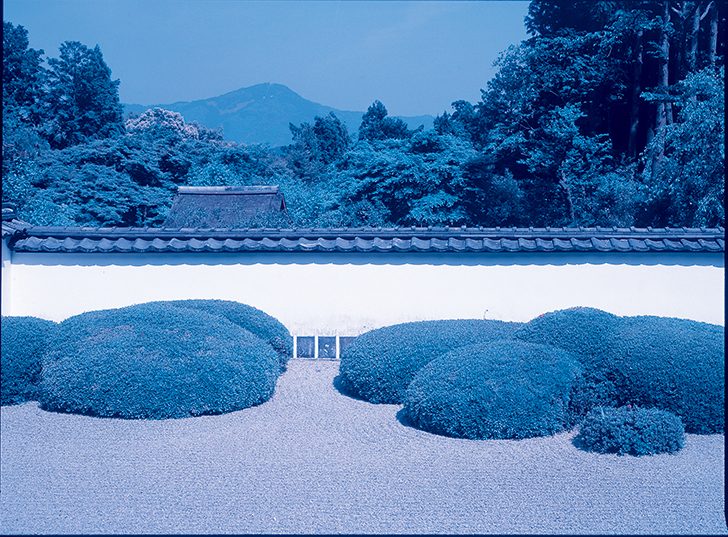




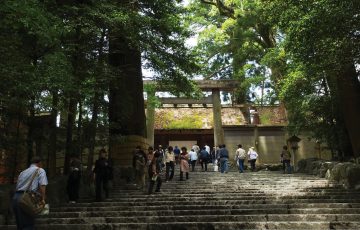
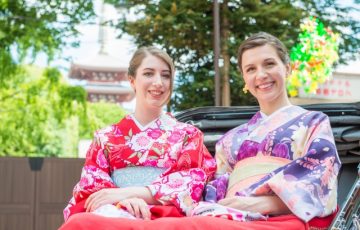
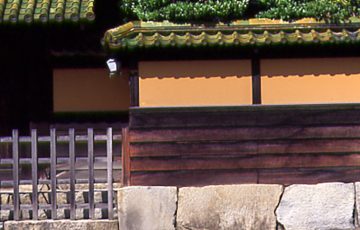


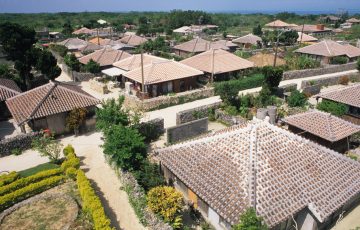
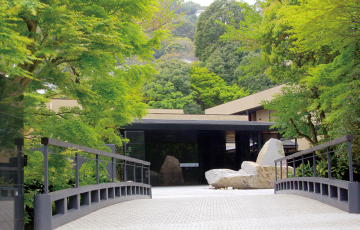


Recent Comments